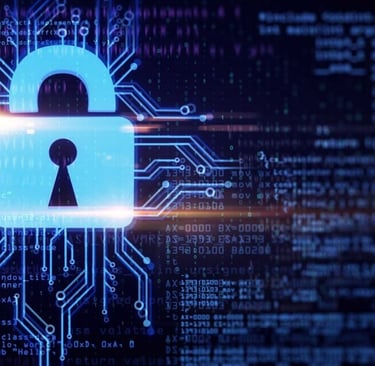
20 Emerging Cybersecurity Trends to Watch Out for in 2024


In today's digital landscape, cybersecurity is of utmost importance. As technology continues to evolve, so do the threats that organizations and individuals face. Staying ahead of these threats requires a proactive approach and a keen understanding of emerging trends in cybersecurity. In this article, we will explore 20 emerging cybersecurity trends to watch out for in 2024.
1. Artificial Intelligence (AI) in Cybersecurity
AI has the potential to revolutionize the field of cybersecurity. It can be used to detect and respond to threats in real-time, automate security processes, and analyze vast amounts of data to identify patterns and anomalies.
2. Machine Learning for Threat Detection
Machine learning algorithms can analyze large datasets to identify patterns and detect potential threats. As cybercriminals become more sophisticated, machine learning will play a crucial role in staying one step ahead.
3. Quantum Cryptography
Quantum cryptography leverages the principles of quantum mechanics to create unbreakable encryption methods. As quantum computers become more powerful, quantum cryptography will be essential to protect sensitive information.
4. Zero Trust Architecture
Zero Trust Architecture is an approach that assumes no user or device can be trusted by default, even if they are within the organization's network. This approach focuses on verifying every user and device before granting access.
5. Cloud Security
With the increasing adoption of cloud services, securing data stored in the cloud becomes paramount. Organizations will need to implement robust security measures to protect their sensitive information.
6. Internet of Things (IoT) Security
The proliferation of IoT devices presents new security challenges. With more devices connected to the internet, there is an increased risk of cyberattacks. IoT security will be crucial to safeguarding critical infrastructure and personal data.
7. Biometric Authentication
Biometric authentication, such as fingerprint or facial recognition, provides an additional layer of security. As biometric technology becomes more advanced and accessible, it will play a significant role in verifying user identity.
8. Ransomware Defense
Ransomware attacks continue to be a significant threat. Organizations will need to invest in robust backup solutions, employee training, and advanced threat detection systems to defend against these attacks.
9. Supply Chain Security
As organizations rely on third-party vendors and suppliers, securing the supply chain becomes critical. Cybercriminals often target the weakest link in the chain, making it essential to implement stringent security measures.
10. Mobile Security
With the increasing use of mobile devices for work, mobile security is becoming more important. Organizations will need to implement mobile device management solutions and educate employees about best practices to mitigate mobile threats.
11. Cybersecurity Regulations
As cyber threats continue to evolve, governments and regulatory bodies are implementing stricter cybersecurity regulations. Organizations will need to stay compliant with these regulations to avoid penalties and protect their reputation.
12. Incident Response Automation
Automating incident response processes can help organizations detect and respond to threats more efficiently. By leveraging automation, organizations can reduce response times and minimize the impact of cyberattacks.
13. Blockchain Security
Blockchain technology provides a decentralized and tamper-proof way of storing data. As blockchain adoption increases, securing blockchain networks and applications will become crucial.
14. Endpoint Security
Endpoints, such as laptops and mobile devices, are often targeted by cybercriminals. Organizations will need to implement robust endpoint security solutions to protect against malware and unauthorized access.
15. Threat Intelligence Sharing
Sharing threat intelligence among organizations can help detect and respond to emerging threats more effectively. Collaborative efforts will be crucial in combating sophisticated cyberattacks.
16. Privacy Protection
With the increasing amount of personal data being collected, privacy protection becomes paramount. Organizations will need to implement privacy-focused practices and comply with data protection regulations.
17. Security Awareness Training
Employees remain a weak link in cybersecurity. Regular security awareness training can help educate employees about common threats and best practices to prevent cyberattacks.
18. Multi-Factor Authentication
Multi-factor authentication adds an extra layer of security by requiring users to provide multiple forms of verification. This helps prevent unauthorized access even if one factor is compromised.
19. Cyber Insurance
Cyber insurance can help organizations mitigate the financial impact of a cyberattack. As the threat landscape evolves, cyber insurance will become an essential component of a comprehensive cybersecurity strategy.
20. Continuous Monitoring and Threat Hunting
Continuous monitoring and threat hunting involve actively searching for signs of compromise within an organization's network. This proactive approach can help detect and respond to threats before they cause significant damage.
In conclusion, staying ahead of emerging cybersecurity trends is crucial for organizations and individuals alike. By understanding and implementing the latest security measures, we can better protect ourselves and our sensitive information from evolving cyber threats.
